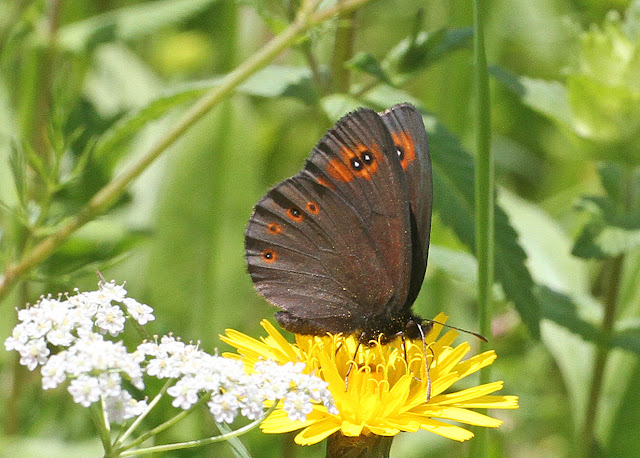From early afternoon these butterflies apparently tend to spend the time high in the trees, so following a 6.30am start we were at the site in good time (10.15am) in ideal hot sunny conditions. The normal form was already flying in an open glade in good numbers, sometime resting briefly on brambles as well as on tree trunks in the shade. It was more than an hour before we located the valezina. It was spending its time resting or briefly flying low down in deep shade, and never straying far from a limited area of the glade. Frequently it would fly very close as though inspecting an intruder and on one occasion it actually flew between my legs (nutmegged by a valezina!). We watched and photographed it (not easy in the deep shade) for over an hour before it was finally lost to view. In the wood we also saw two White Admirals, a Small Copper, some Purple Hairstreaks, and many Meadow Browns and Speckled Woods in this ideal butterfly locality.
It was a long but most rewarding day as for many years I'd hoped to eventually see a valezina. So another long-standing target was achieved - not least thanks to Les who did all the driving and to Dave for his tip-off (July 18, 2016).
x


















































